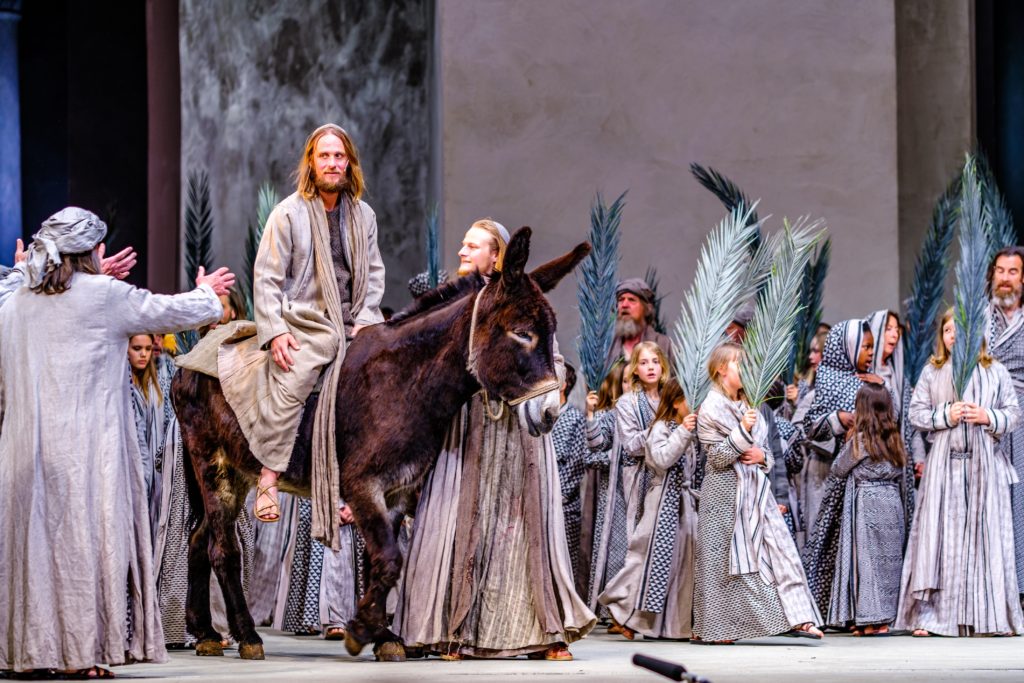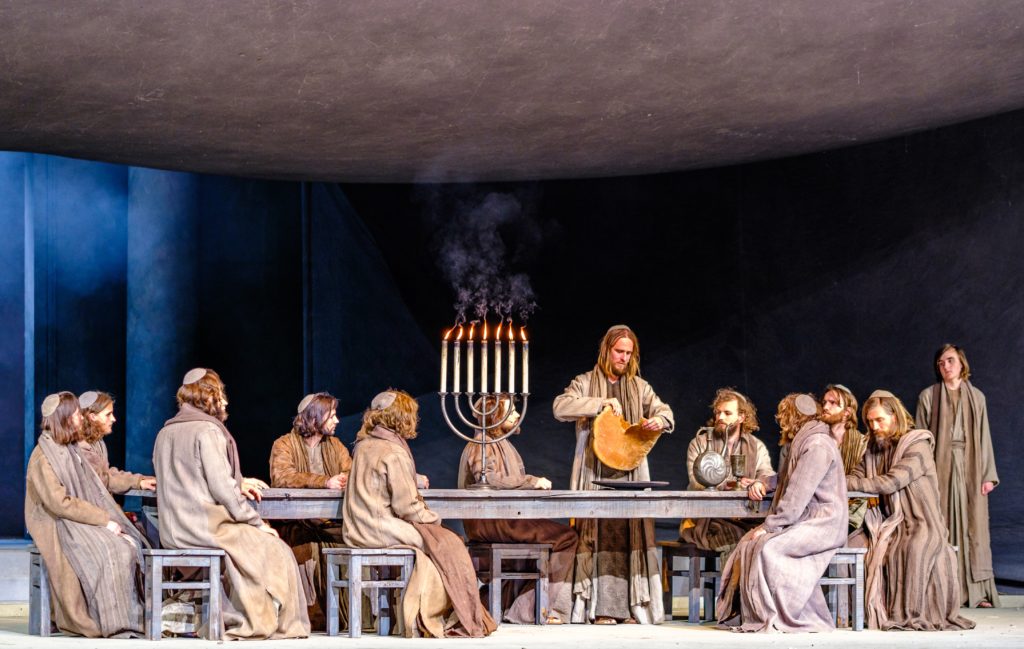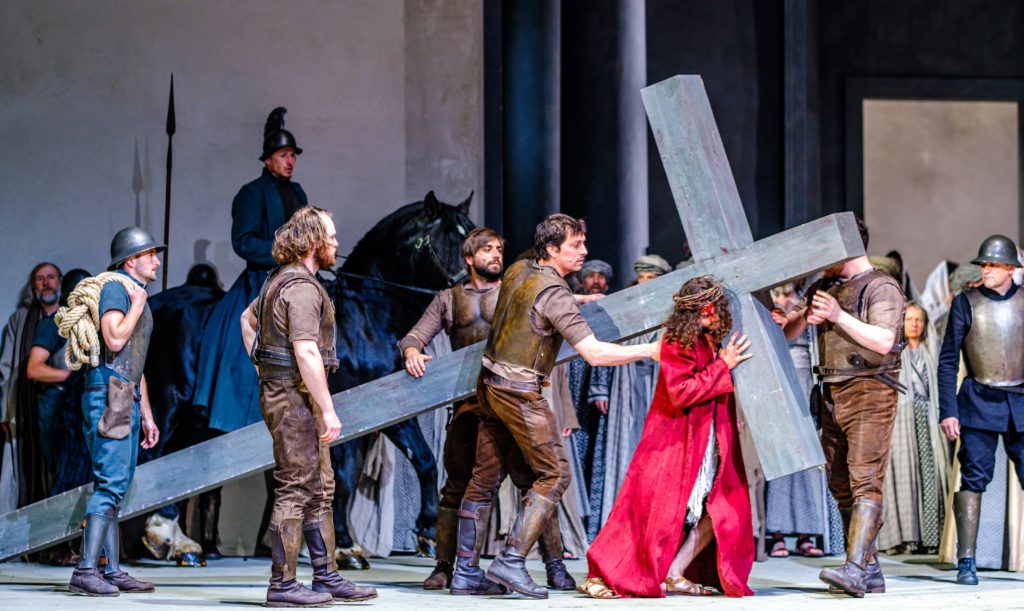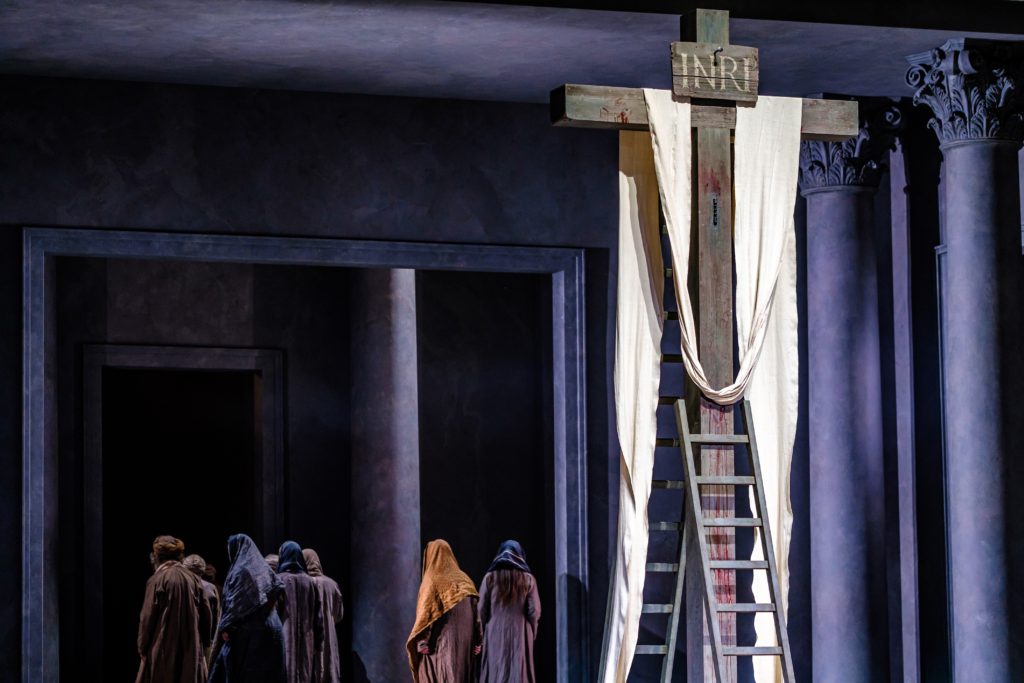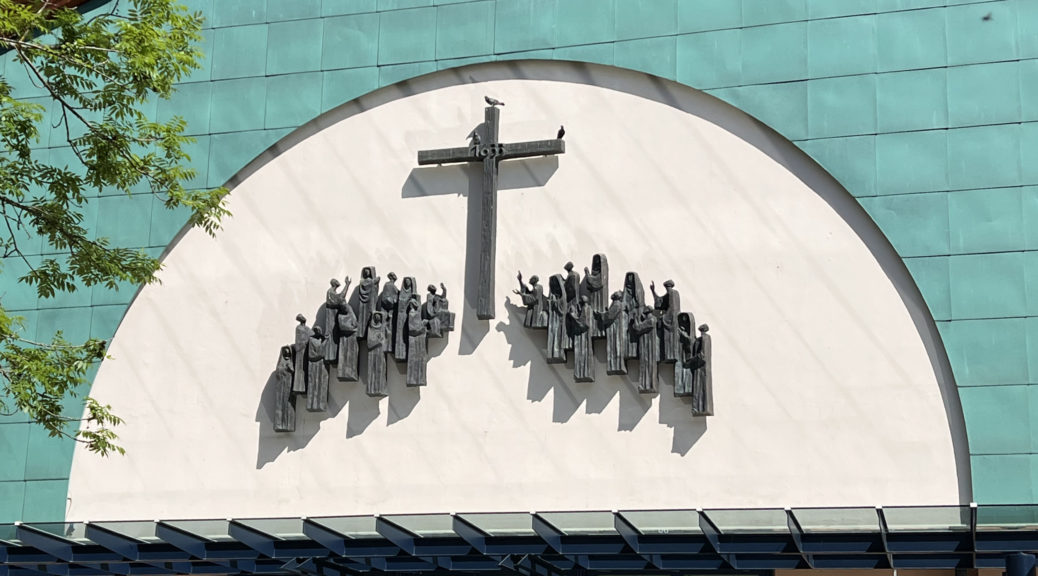
The Oberammergau Passion Play
We visited Oberammergau in 2015 as part of our Alps and Dolomites tour. We were able to tour the Passion Play theatre, but of course there wasn’t a play that year. We booked our Blue Danube tour with Oberammergau in 2018 and now – in 2022 – it was finally going to happen.
The play has a several hundred year history. In the 1600s, the Thirty Years War was raging in Europe. As the war moved into Germany, the bubonic plague was also spreading throughout Bavaria and Saxony where more than a million people died. Oberammergau seemed protected from the plague. Surrounding mountains made it harder to enter the village and the local government imposed a quarantine, carefully controlling who came into the village. But one night, a villager who worked in another town snuck in to visit his family and attend a church festival. Not only did he and his family die of the disease, but 84 other Oberammergau residents died as well. Many believed they were being punished by God so an act of contrition might be the only way to save themselves from dying of the plague.
So it was that in July 1633 the Village Council, in a desperate act of faith, summoned those who were able to meet in the church and there, before the altar, they made a solemn vow to perform, every tenth year, a play of the Saviour’s suffering and death, if God would deliver them from the disease.
A Pilgrim’s Guide to Oberammergau and its Passion Play by Raymond Goodburn (2019)
The first Passion Play took place in 1634. The first plays would be performed very near where the plague victims were buried. The church pictured below, St. Peter and Paul Church, was built in the 1700s, replacing the earlier church where the 1633 vow was made. The current priest, Rev. Thomas Gröner, shared in a New York Times interview that no deaths were recorded in church records after the people’s vow.
Standing in his church underneath the cross where villagers had once made their promise, Gröner held out a battered, leather-bound book. “Look,” he said, his fingers scanning a faded page with tightly packed handwriting that abruptly stops three-quarters down. “They recorded dozens and dozens of deaths and then — none.”
Of beards and bubonic plague: German village prays for a (2nd) miracle. The New York Times, Katrin Bennhold, April 06, 2020.
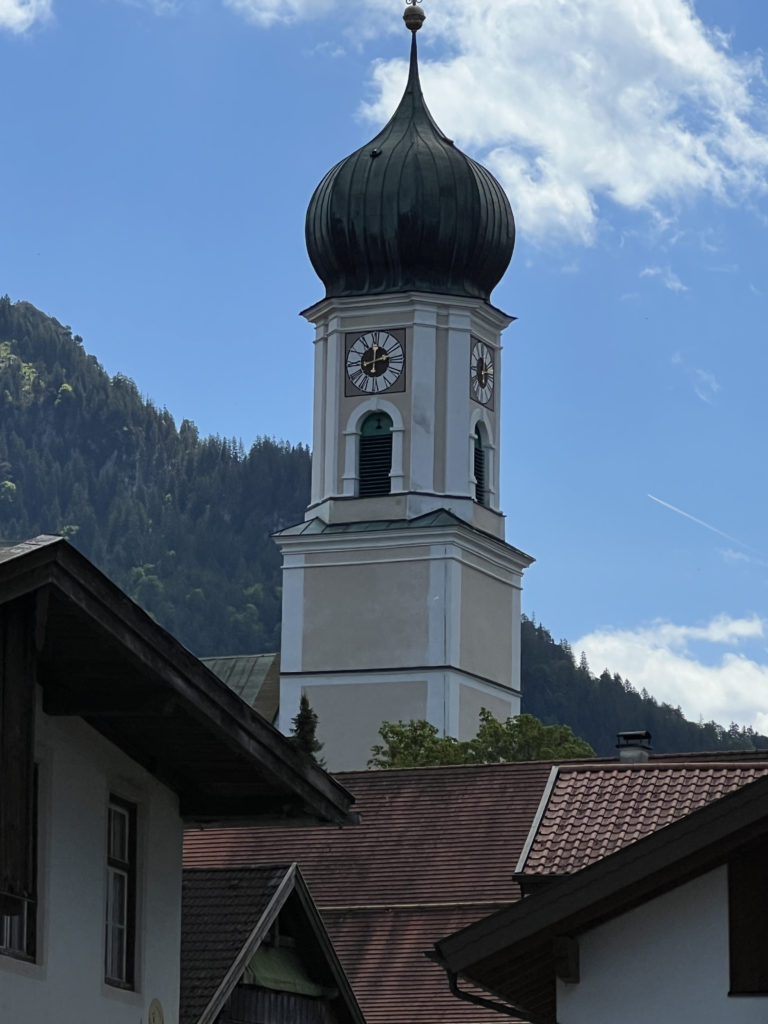
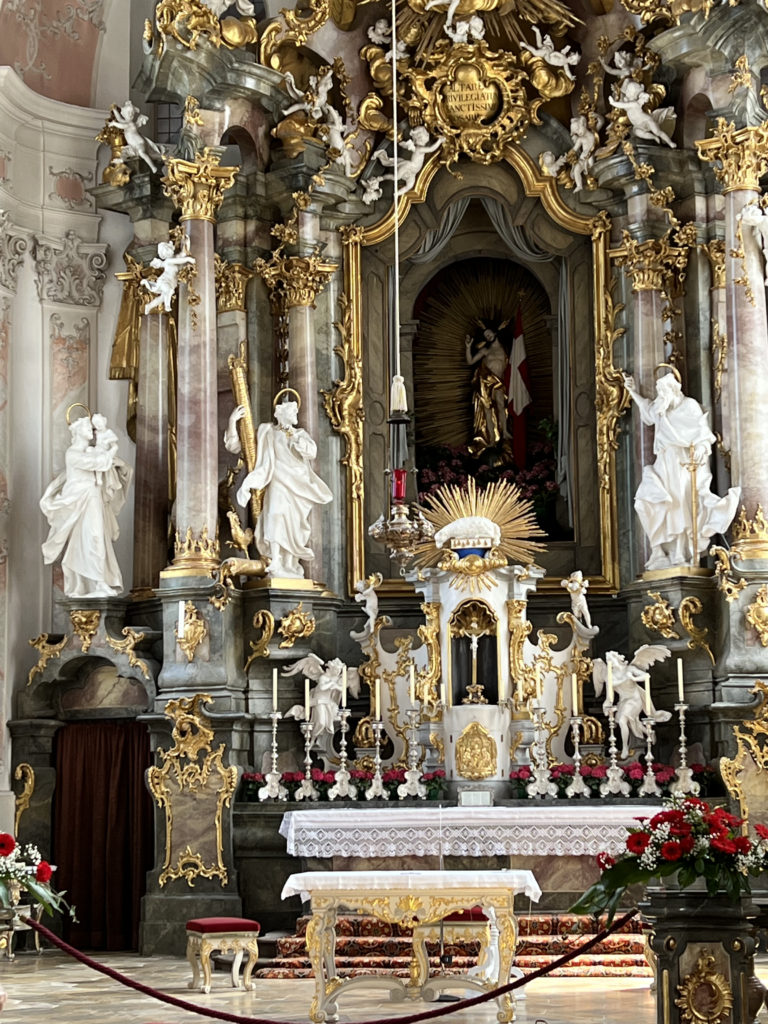
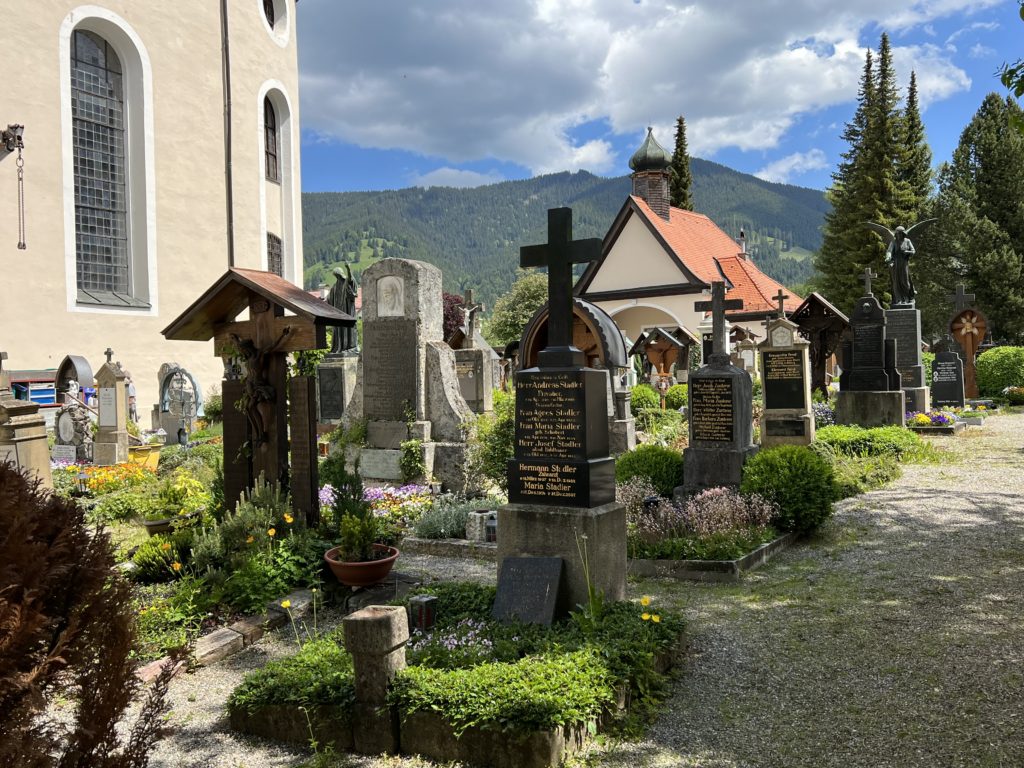
In 1674, it was decided to move the Passion Play to the beginning of each decade. Throughout all these years there were only two times when the Passion Play could not happen. Once was in 1770 when passion plays were not permitted and the other was in 1940 due to World War II. With those two exceptions, the play has continued to this day. The promise of those first people who sought to avoid further plague deaths in their village has been honored by their descendants.
While tradition is certainly an important part of the Oberammergau Passion Play, there have also been changes, including the text, through the years. Change was often rooted in controversy. There was a new script written by a monk from the Ettal monastery for the performance in 1750 which emphasized the Devil as being responsible for Jesus’ crucifixion. It was felt this text was too different than what was written in the Bible and subsequent scripts more closely aligned to the Gospels. Later revisions put the responsibility for Jesus’ crucifixion on the Jews, which also drew controversy, especially after Adolf Hitler attended the Passion Play and spoke how the play (in his mind, accurately) reflected on the Jewish people. There were some further revisions through the years, but not until 2000 did the script again see major changes. The new text does not put responsibility for Jesus’ crucifixion on any one group and conveys that Jesus and the disciples were, in fact, Jewish. In the scene depicting the Last Supper, there is a Menorah on the table, the disciples wear prayer shawls and Jesus gives a blessing in Hebrew.
The play we saw was the 42nd Oberammergau Passion Play. The picture below is the present theatre which was built around 1900. The theatre can seat 4,500 guests. The portion of the theatre where the audience sits is covered (the roof was added in 1930), but the stage is open-air. UNESCO named Oberammergau’s Passion Play to their list of Intangible Cultural Heritage in 2014.
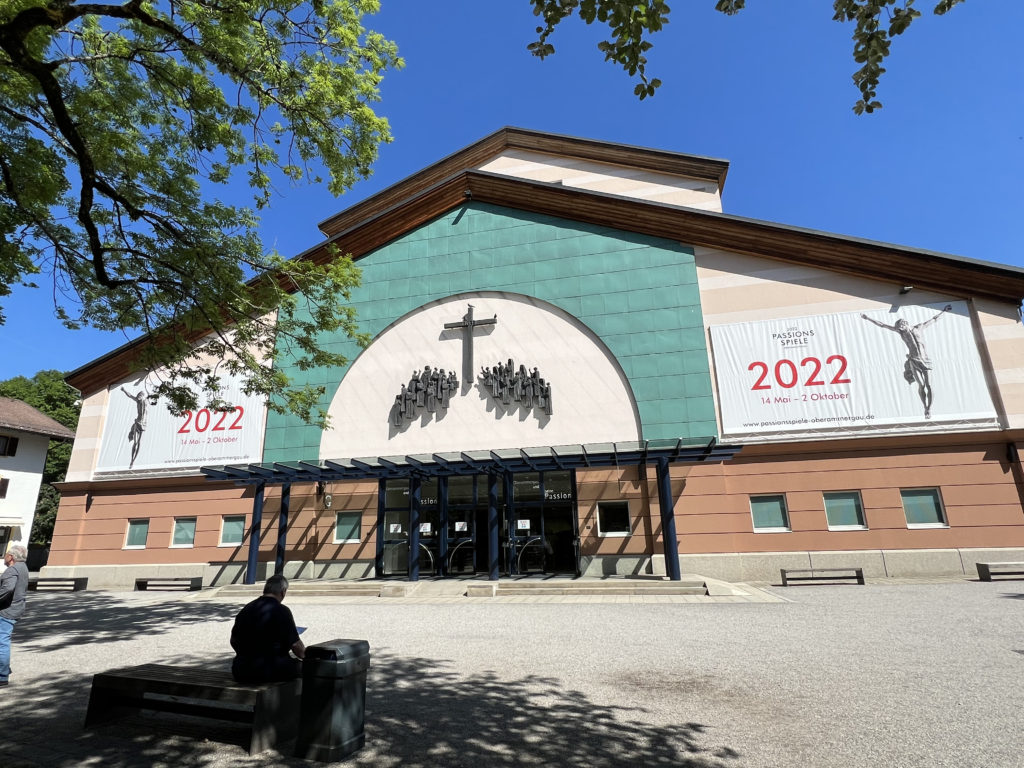
The day had arrived and we were in our seats to see the Passion Play. About 2,400 people are involved in the Passion Play including actors, musicians and technical support people. Cast members must have been born in Oberammergau, be married to a local resident for 10 years or have lived in the community for 20 years – this is known as “the right to play.” Children – there are about 500 this year – may also participate. Many roles have two actors to play a part which gives actors a somewhat more flexible schedule (though it is still demanding) and to have a back-up plan in case of illness.
On the Ash Wednesday a year before the play, The Hair and Beard Decree is issued. Actors (except those playing Roman soldiers) take a pledge that they will not cut their hair or shave. The decree is a long-standing tradition, estimated to have begun about 200 years ago.
The performances include spoken text and opera-style singing with an orchestra and chorus.
In the year 2022 the music for the Passion Play will once again be largely based on the compositions of Rochus Dedler (1779 – 1822). Rochus Dedler was born in Oberammergau. He graduated from solid music studies in Munich… Basic parts of the music he composed for the year 1820 are regularly performed in Oberammergau, even beyond the Passion Play years, and are a consistent component of the local music culture.
https://www.passionsspiele-oberammergau.de/en/play/choir
“Tableaux vivants” or living pictures are also part of the Passion Play. In fact, their use dates back to 1750. Motionless actors depict scenes from the Old Testament that act as a bridge between the Old and New Testaments. The one below shows Moses as God speaks to him through a burning bush.
I should note that photography and audio recordings were not allowed during the Passion Play performance. The pictures I am including of the performance in this post were taken on May 4, 2022 during the photo press event. These are pictures I purchased from Shutterstock.
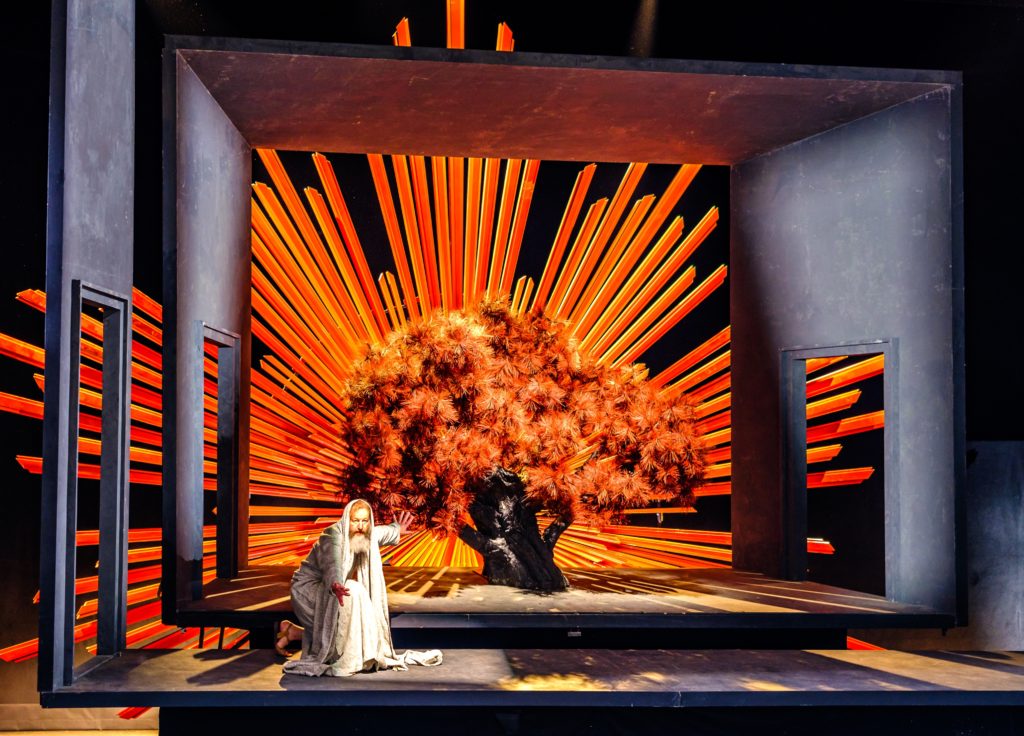
While this production is amateur, one would think it is professional – the acting, the costumes, the staging and the music were remarkable. These pictures give a sense of what we saw on stage, but the music cannot be pictured. It was incredibly beautiful and expertly choreographed. The performance clearly demonstrates the dedication and commitment the people of Oberammergau have to the vow made by their ancestors in 1633 and their hope to positively impact the lives of those in their audiences today.
